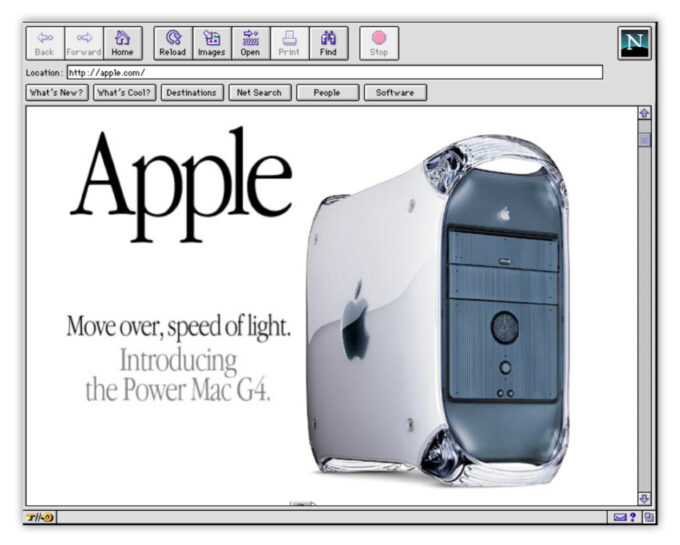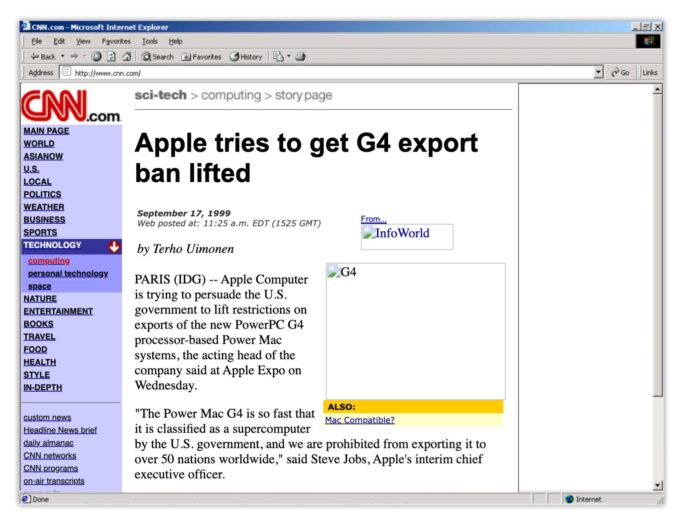This article was published at Pessimists Archive on 1/23/2024.
This week the Macintosh turned 40
In 1999 Apple introduced the Power Mac G4, a ground breaking Personal Computer, not aesthetically – like the iMac before it – but mathematically: it had 1 GIGAFLOP of computing power.

Crossing this threshold meant the US government classified the device as a munition and potential weapon of war, and so was subject to strict export controls. The cold war era 1979 Export Administration Act that set these rules, was written to prevent powerful computers falling into communist hands.

A GIGAFLOP in 1979 was cutting edge, powerful and scary – unlike today when we carry around thousands of GIGAFLOPs in our pockets: the iPhone 15 Pro has 2000 GIGAFLOPs, while iPhone 12 has 1000.
In a classic example of Apple’s marketing genius the munition classification was used in its marketing, it dubbed the G4 a ‘Personal Supercomputer’ and ran a TV ad featuring tanks surrounding the device. Steve Jobs would say at its unveiling that they got the idea after being informed of the restrictions by the US Government government officials.

The narration begins:
For the first time in history, a personal computer has been classified as a weapon by the US government . . . the Pentagon wants to ensure that the new Power Macintosh G4 does not fall into the wrong hands.
The punchline?
As for Pentium PCs, well, they’re harmless.
Companies lobbied for the out-dated law to be changed as Moores Law saw US computer companies rapidly approach crippling export restrictions on products. (This mimicking a similar parallel battle about encryption at the time.) And they succeeded. The truth was, the GIGAFLOP threshold had been increased by President Clinton in prior months – but was not set to go into effect until January 2000 – until then Apple had export restrictions, but did have a headline grabbing marketing gimmick.

The Power Mac G4 is so fast that it is classified as a supercomputer by the U.S. government, and we are prohibited from exporting it to over 50 nations worldwide.
Steve Jobs
This intriguing chapter in computing history is pertinent today, particularly as calls to regulate AI and once again treat the computing power used to train them as munitions, grows louder.
In 1979 1 GIGAFLOP was deemed weapons-grade computational power. By 2000 it was in a consumer product – but restricted by an outdated law. Now, Apple’s M3 Mac – boasting 4000 GIGAFLOPs – is exported globally.
In 2023, President Biden’s AI executive order introduced a new benchmark for reporting AI trained on hardware exceeding “1e26 floating point operations or 1e23 integer operations.” Perhaps we’ll look back in 50 years and laugh how we treated once impressive levels of computing power as threatening.
Assuming AI hasn’t killed us all by then.
